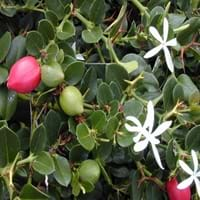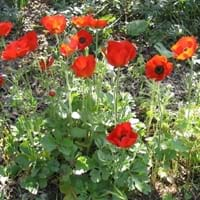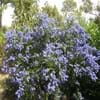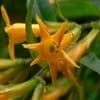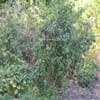Life Span
Perennial
Perennial
Type
Shrub
Bulb or Corm or Tuber
Origin
Southern Africa
Eastern Europe, Northern Africa, Western Asia
Types
Carissa Carandas
tecolate strain
Number of Varieties
Not Available
Habitat
Coastal bush land, Sandy areas
Lawn, Temperate Regions
USDA Hardiness Zone
9-11
7-11
Sunset Zone
H2, 16, 17, 18, 19, 20, 21, 22, 23, 24
21,22
Habit
Cushion/Mound-forming
Upright/Erect
Flower Color
White
White, Yellow, Red, Purple, Orange, Pink
Flower Color Modifier
Not Available
Bicolor
Fruit Color
Hot Pink, Magenta, Purple, Red
Not Available
Leaf Color in Spring
Dark Green
Blue Green
Leaf Color in Summer
Dark Green
Light Green
Leaf Color in Fall
Dark Green
Several shades of Green
Leaf Color in Winter
Dark Green
Light Green
Leaf Shape
Oval to roundish
Palmate
Plant Season
Spring, Summer, Fall, Winter
Spring, Summer
Sunlight
Full Sun, Partial Sun
Full Sun
Type of Soil
Loam, Sand
Loam, Sand
The pH of Soil
Acidic, Neutral
Acidic, Neutral, Alkaline
Soil Drainage
Well drained
Well drained
Bloom Time
Indeterminate
Late Spring, Early Summer
Tolerances
Drought
Drought
Where to Plant?
Ground, Pot
Container, Ground, Pot
How to Plant?
Seedlings
From bulbs, Seedlings, Transplanting, Vegetative Reproduction
Plant Maintenance
Medium
Medium
Watering Requirements
Average Water Needs
Keep the Soil well drained, Requires plenty of water during the growing season
In Summer
Lots of watering
Lots of watering
In Spring
Moderate
Moderate
In Winter
Average Water
Average Water
Soil pH
Acidic, Neutral
Acidic, Neutral, Alkaline
Soil Type
Loam, Sand
Loam, Sand
Soil Drainage Capacity
Well drained
Well drained
Sun Exposure
Full Sun, Partial Sun
Full Sun
Pruning
Remove damaged leaves, Remove dead branches, Remove dead leaves
Remove damaged leaves, Remove dead branches, Remove dead leaves
Fertilizers
Equal amount of N,P,K
All-Purpose Liquid Fertilizer
Pests and Diseases
Aphids
Not Available
Plant Tolerance
Drought
Drought
Flower Petal Number
Single
Single, Double, Semi-Double
Foliage Texture
Medium
Medium
Foliage Sheen
Glossy
Matte
Attracts
Birds
Insects, pollinators
Allergy
Mildly Toxic
Skin irritation
Aesthetic Uses
along a porch, deck or patio, Ground Cover, small hedge
along a porch, deck or patio, Bouquets, Cut Flowers, Hanging Basket
Beauty Benefits
Not Available
Not Available
Environmental Uses
Air purification
Air purification
Medicinal Uses
Iron, Potassium, Vitamin C
Not Available
Part of Plant Used
Fruits
Flowers
Other Uses
Cake, Jam, Jelly, Sauces
Basketary, deer resistant, Used as Ornamental plant
Used As Indoor Plant
Yes
No
Used As Outdoor Plant
Yes
Yes
Garden Design
Bedding Plant, Container, Edging, Edible, Foundation, Groundcover, Hedges, Topiary, Bonsai, Espalier, Tropical
Bedding Plant, Container, Cutflower, Mixed Border
Botanical Name
CARISSA macrocarpa 'Emerald Blanket'
RANUNCULUS asiaticus
Common Name
Large Num-Num
Garden Ranunculus, Persian Buttercup
In Hindi
नेटाल बेर
Persian Buttercup
In German
Natal Plum
Asiatischer Hahnenfuß
In French
natal Plum
Renoncule des fleuristes
In Spanish
Ciruela Natal
Persian Buttercup
In Greek
Natal Plum
Persian Buttercup
In Portuguese
Natal Plum
ranúnculo
In Polish
Natal Plum
Jaskier azjatycki
In Latin
Natal Plum
Persian Buttercup
Phylum
Magnoliophyta
Vascular plant
Class
Magnoliopsida
Not Available
Order
Gentianales
Ranunculales
Family
Apocynaceae
Ranunculaceae
Clade
Angiosperms, Asterids, Eudicots
Angiosperms, Eudicots
Tribe
Carisseae
Ranunculeae
Subfamily
Rauvolfioideae
Unknown
Number of Species
Not Available
Difference Between Natal Plum and Persian Buttercup
If you are confused whether Natal Plum or Persian Buttercup are same, here are some features about those plants to help you choose better. Many people think that these two plants have the same characteristics, but one can see Natal Plum and Persian Buttercup Information and learn more about it. Fertilizers required for proper growth of Natal Plum are Equal amount of N,P,K, whereas for Persian Buttercup fertilizers required are All-Purpose Liquid Fertilizer. Hence, one should know the basic difference between Natal Plum and Persian Buttercup if you are planning to have them in your garden to enhance its beauty.
<
Flowering PlantsImportance of Natal Plum and Persian Buttercup
Want to have the most appropriate plant for your garden? You might want to know the importance of Natal Plum and Persian Buttercup. Basically, these two plants vary in many aspects. Compare Natal Plum and Persian Buttercup as they differ in many characteristics such as their life, care, benefits, facts, etc. Every gardener must at least have the slightest clue about the plants he wants to plant in his garden. Compare their benefits, which differ in many ways like facts and uses. The medicinal use of Natal Plum is Iron, Potassium and Vitamin C whereas of Persian Buttercup is Not Available. Natal Plum has beauty benefits as follows: Not Available while Persian Buttercup has beauty benefits as follows: Not Available.
Compare Facts of Natal Plum vs Persian Buttercup
How to choose the best garden plant for your garden depending upon its facts? Here garden plant comparison will help you to solve this query. Compare the facts of Natal Plum vs Persian Buttercup and know which one to choose. As garden plants have benefits and other uses, allergy is also a major drawback of plants for some people. Allergic reactions of Natal Plum are Mildly Toxic whereas of Persian Buttercup have Skin irritation respectively. Having a fruit bearing plant in your garden can be a plus point of your garden. Natal Plum has showy fruits and Persian Buttercup has no showy fruits. Also Natal Plum is not flowering and Persian Buttercup is not flowering . You can compare Natal Plum and Persian Buttercup facts and facts of other plants too.
